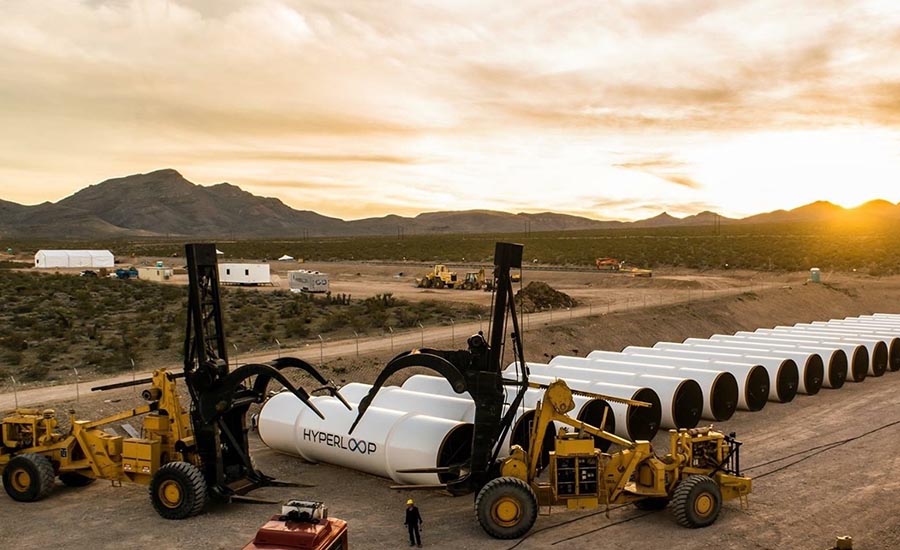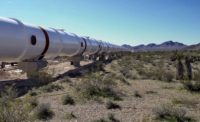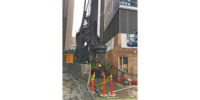May saw the successful completion of a highly-anticipated propulsion open-air test in North Las Vegas for Hyperloop One, the company inspired by Elon Musk’s ultra-fast alternative transportation model. While the test is a big step forward, Hyperloop One still has a lot of work on its hands as it is essentially planning to construct a product - including trains, tubes and infrastructure - that has never been built before. In order to address the logistical challenges associated with such an endeavor, the company has already partnered with many global engineering and development partners.
Thus far, Hyperloop One has partnered with a range of partners around the world to deal with engineering and logistical obstacles, including AECOM, Amberg Group, Arcturan Sustainable Cargo, Aruo, Bjarke Ingels Group, Cargo Sous Terrain, Deutsche Bahn Engineering & Consulting, FS Links, Grid Group, KPMG and SYSTRA, according to a Hyperloop One press release.
The initial proof of concept in May took place on an outdoor track, but the final product will require a tube system that does not yet exist. That is because the Hyperloop concept is part classic rail train and part futuristic dream vehicle: a vactrain concept with a magnetically-levitated train in an airless tube.
Hyperloop One used internal teams to construct its test track for the May proof of concept run. It plans on utilizing in-house teams to build the tube for its next test in quarter four of this year as well. The cost to build a usable Hyperloop One line between cities will be substantial, but the company does not yet have any cost projections for proposed routes, says a company spokesperson.
Based on Elon Musk’s Alpha design for a Hyperloop between Los Angeles and San Francisco from 2013, a single project could cost upward of $6 billion to construct, though critics called that projection far too low at the time. A Hyperloop One media representative told ENR Southwest the firm does not yet have cost projections on a Hyperloop link. Internal teams were solely used to construct the test track.
Arup and SYSTRA will play a large role in making Hyperloop One’s high-speed tube system a reality, however. Arup has experience engineering complex transportation tunnels like Crossrail’s underground system in London and is responsible for scouting and evaluating regions where Hyperloop One could build its product in the future. Hyperloop One will rely on SYSTRA to develop high-speed transportation plans for urban centers in France, Russia, former Soviet states and the Middle East.
The Nordic area of Europe is one of the early contenders to host an early Hyperloop link. FS Links already has plans for a fixed link between Helsinki and Stockholm with several stops in between. FS Links states a potential Hyperloop could make the more than 300-mile trip in 30 minutes or less.
Hyperloop One also has plans to use its technology to move freight. In pursuing that goal, the company partnered with engineering firm AECOM to support a feasibility study conducted by Arcturan Sustainable Cargo that looked at the Hyperloop’s potential effects on efficiency at the Port of Los Angeles. Cargo Sous Terrain is also looking at how it could use a Hyperloop system to move packages underground through Switzerland.
Before it can begin moving people or freight, Hyperloop One will have to prove that its concept works. The May test test is seen as a step towards the company’s “Kittyhawk moment”, when it expects to levitate a pod and accelerate it to 700 mph in 2 miles of tube some time in the last quarter of 2016, according to the company.
The initial test took a year to put together but occurred in the blink of an eye and featured a magnetic levitating sled on a track that accelerated to 100 mph in 1.9 seconds before hitting sand 100 yards away. The demonstration took place in front of a crowd that included press and Hyperloop One executives, and the company also posted video of the event on it’s YouTube channel at https://www.youtube.com/watch?v=1e-Po9C8Kj8.
Hyperloop Technologies is working to bring the transportation project to every region with its recently announced Hyperloop One Global Challenge. According to the company’s website, it is “a first-of-its-kind competition” to help Hyperloop One select locations for the vactrains and also collaborate with talented minds. The Hyperloop One Global Challenge is “an opportunity for individuals, companies, and governments to develop competitive proposals for using the first Hyperloop One solutions on transport corridors in their regions,” according to a company press release.
This all fits into Hyperloop One’s grand project, which is to get the world excited about this alternative form of transportation and connect people to people using the best technology. Getting a wide variety of parties on board by making the project open source allows the company not only foster relationships with governments and citizens alike but also bring in top brains from multiple organizations and countries.
Arizona State University, recently ranked first by US News & World Report on its list of most innovative schools, is one of those interested parties. ASU Polytechnic Campus in Mesa, Ariz. created a team just for the Hyperloop One Global Challenge initiative with the hopes that its blueprints are among those chosen by the company. Joshua Kosar, the team captain of the ASU initiative, is excited for the Hyperloop, but remains cautious. Via email he says that, so far, the engineering isn’t showing anything too revolutionary.
"While I think the engineering work so far has been very challenging and the results in Nevada were impressive, they were mostly for show,” he says. “What they have demonstrated so far has been proving concepts and properties that we know work.”
So what does Kosar want to see from the Hyperloop tests? Namely, he would like to see a low-pressure environment. He explains, “Once testing begins in the low-pressure environment (near vacuum), the real challenge and innovation begin."
That might be years away and the reality is that maybe even before Hyperloop can show true innovation, the company is facing hurdles such as land-use rights and getting around existing transportation companies before its planned 2021 deadline.
Hyperloop One’s champions argue that the Hyperloop will, in time, ingratiate itself worldwide thanks to its hyperloop pod that can sustain high speeds with very low energy, and the fact that it is a green form of alternative travel that does not emit carbon emissions, a key contributor to global warming.
Wayne Schutsky and Stephanie Sparer contributed to this report.



